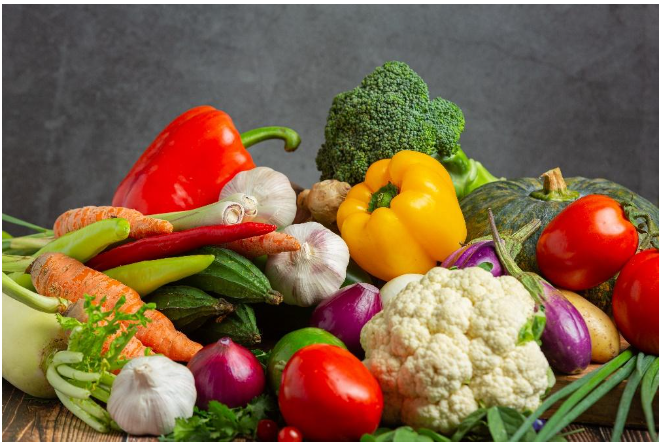What are the food safety risks of consuming raw/undercooked non-RTE vegetables?
Raw or undercooked non-RTE vegetables may contain these microorganisms and substances:
Bacteria
Foodborne bacteria such as E. coli, Salmonella and Listeria are commonly found in fresh vegetables. These food contaminants may taint the vegetables at any stage from farm to fork and can lead to food poisoning symptoms like diarrhoea and vomiting. In severe cases, they can be fatal.
Viruses
Like bacteria, viruses can enter vegetables both before and after harvesting. Contamination can occur when dirty water is used for irrigation or as a fertiliser. It can also be due to poor hygiene practices, such as handling vegetables with dirty hands.
Norovirus, a group of viruses that spreads very easily and quickly, is the most common cause of food poisoning in fresh produce. Read more about Norovirus here.
Parasites
Though rare in Singapore, fresh vegetables may be contaminated by parasites spread by animals like snails or from contaminated irrigation water. Some of the possible parasites found in vegetables include Cryptosporidium and Cyclospora, which can cause stomach cramps, diarrhoea and fever when ingested.
Pesticide residues
The use of pesticides to grow crops may leave pesticide residues on vegetables. If consumed at high levels for a long time, pesticides can lead to cancer and damage our reproduction, immune and nervous systems. Washing, peeling and cooking can all reduce pesticide levels significantly.
Plant Toxins / Chemicals
Some vegetables contain substances that can be harmful to our bodies if eaten raw. For example, eating Cekur Manis raw can lead to a lethal lung disease, while cassava and bamboo shoots contain chemicals that can be converted to a toxic chemical called cyanide when consumed raw. Another example is taro root, which contain calcium oxalates in a sharp needle form that can cause irritation to our mouth and throat. However, heating can effectively break down and remove these substances.
How does the industry produce safe RTE vegetables?
The safety of RTE vegetables is managed through good hygiene practices. They are thoroughly washed with drinking water and dried to prevent spoilage.
Some farms grow RTE vegetables in a controlled environment, so that there is minimal or no contamination by germs and pests. Food grade disinfectants are sometimes used to remove germs more effectively.
From the packing centre to retail shops, RTE vegetables are always refrigerated. This "cold chain distribution” stops germs from growing too.
How do we ensure that our vegetables are safe?
Based on scientific evidence, SFA sets regulatory limits for pathogens and pesticide residues in vegetables to ensure they are safe to eat. SFA also conducts regular inspections, sampling and testing to ensure compliance with the standards. RTE vegetables are subject to stricter microbiological standards since they are meant to be eaten directly.
As consumers, you can also follow these tips to eat your vegetables safely:
Read the label of pre-packed vegetables and follow the instructions for use. Some salad packs are not RTE and need to be washed before consumption.
Wash your hands before and after handling vegetables.
Remove damaged or bruised parts of vegetables before handling them.
Wash non-RTE vegetables thoroughly. Soak vegetables in fresh tap water for 15 minutes to remove germs and chemicals effectively.
Cook non-RTE vegetables before eating. Cooking is the best way to destroy germs and harmful chemicals.
Consumers who are very young, elderly, pregnant or immunocompromised should avoid raw vegetables, especially raw sprouts. Cooked vegetables would be a safer choice.
Always separate fruits and vegetables from raw meat and seafood. The juices from raw meat and seafood often contain bacteria that causes food poisoning.
Refrigerate RTE vegetables and cut vegetables if not consuming immediately.
About the Author
Herman Teo is a Senior Scientist from the Risk Assessment and Communications Department of the National Centre for Food Science. With a Masters in Food Science and Human Nutrition from the National University of Singapore, his recent work includes the regulatory framework for insects for food and feed, and examining emerging food processing risks.

